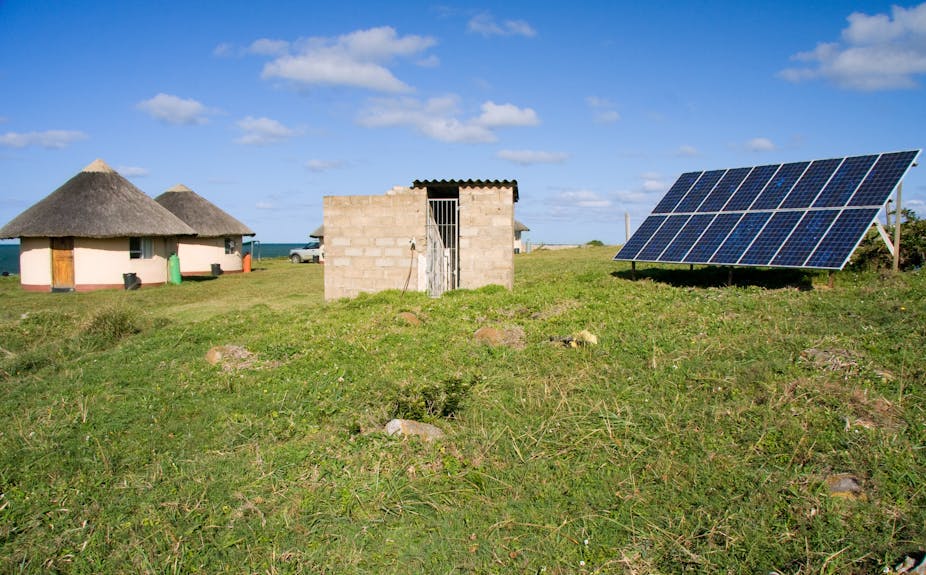Two out of every three Africans – a staggering 620 million people – do not have access to modern energy. And lack of energy is just one of many challenges in the Global South to sustainable development. It is abundantly clear that integrated solutions are required.
The UN’s response to energy and other forms of inequality has been to adopt 17 Sustainable Development Goals (SDGs). This milestone marks an important step in synthesising solutions that go beyond one sector.
My own SDG journey started with observations made in multidisciplinary fieldwork studies in communities exposed to schistosomiasis or bilharzia, in East Africa. In most communities I saw some form of health infrastructure, service provision and equipment. Typically, there was no sustainable energy supply to run equipment, very little capacity for building maintenance and staff were badly paid.
This is the case for most on the African continent. With the advent of the SDGs, minds will be hopefully moved towards integrated solutions. Solutions that combine:
building resilient infrastructure;
providing sustainable energy;
introducing universal health care, education and nutrition; and
generating opportunities for economic prosperity and community empowerment.
The evidence base to support integrated solutions should come from transdisciplinary research. In the health sector, such evidence comes from the outputs of projects like the EU-funded Healthy Futures.
There, several actors from academia, meteorological services, civil servants and other stakeholders from African countries joined forces to develop a series of risk maps. These maps link climate change to diseases like malaria, rift valley fever and Schistosoma mansoni in East Africa. Information that helps policy makers allocate limited resources.
Experience sparked action
My research and experiences encouraged me to engage with a consortium to create a verbal model for integrated solutions to sustainable development. The consortium’s current aim is to engage and shape this model into affordable projects. The projects combine green architecture, sustainable energy, commercial and civic services and research.
The verbal model, known as the Universal Sustainable Habitat Development (USHD), considers how large, energy-efficient community buildings like schools and hospitals could be designed and built to provide many of the resources required for sustainable, healthy communities. Readily available technologies for the model include:
solar panels for heating, lighting and powering electrical devices and equipment;
rainwater harvesting for collection and storage of water; and
anaerobic digestion for conversion of organic waste into energy and fertiliser.

Of these technologies, solar power is the most critical. The UK’s Department for International Development has recently endorsed solar as a key technology for reducing poverty. Solar addresses a fundamental issue of electrifying hard-to-reach communities because it can work entirely off grid. It also offers a real alternative to costly and unreliable energy based on fossil fuels.
Preliminary calculations indicate that by attaching solar panels to a large building, off-grid energy can be supplied to the building for all its energy needs – at a relatively low running cost. These buildings should have two features:
They are architecturally designed to make it energy sufficient.
They have a building management system to make it energy efficient.
If these conditions are met, a USHD facility could offer low whole life-cycle costs. This can be seen as a crucial incentive for investment in any domain. In health, for example, a major barrier to providing sustainable services in low- to middle-income countries is the lack of resources and incentives required for retention of the health workforce in rural areas.
A USHD health centre could both attract staff and offer improved services for people exposed to neglected tropical diseases.
There are still many questions
We cannot assume a one-size-fits-all approach in a rapidly expanding, diverse and geographically fragmented population. Each physical implementation of the model would have its own set of requirements.
Each project must be locally contextualised.
There must be stakeholder engagement.
Transdisciplinary research is essential. It encompasses engineering, architecture, social, health, educational, economic and other sciences.
Many research subject areas are possible and individual projects can draw on previous research in each domain. This includes investigating how the USHD:
affects perceptions of energy-security;
contributes to improved understanding of maintaining storage devices such as batteries in communities not used to the technology;
supports the positive relationship between energy supply and GDP; and
reverses the fact that buildings are ordinarily potent emitters of carbon dioxide, which is a major driver of climate change.
From model to implementation
Each UHSD model can be physically implemented in pilot projects with appropriate funding.
Whether USHD facilities will ever be physically implemented at scale depends to some extent on the success of schemes like the EU’s Electrifi project. They encourage the private sector into the Sustainable Energy for all domain.
Its success as a framework for linking the SDG objectives will depend on widespread acceptance that integrated approaches have a potentially multiplicative benefit. But an even more widespread acceptance that sustainable development will only happen if we work together.

